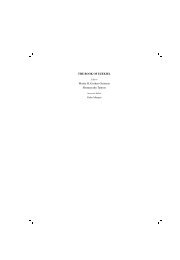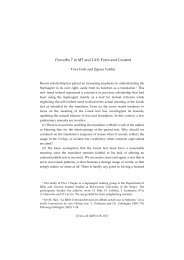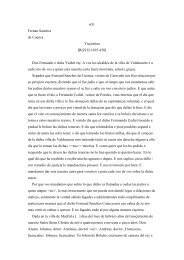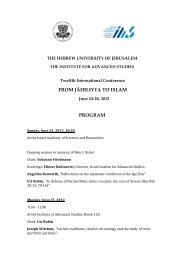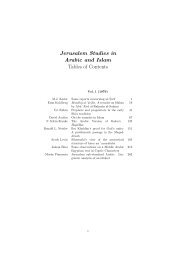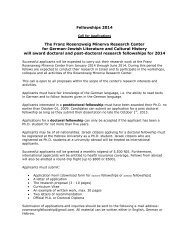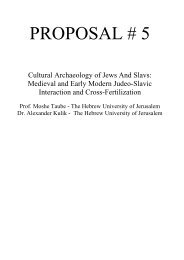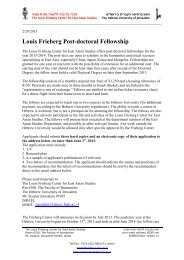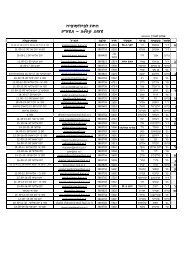Baber Johansen
Baber Johansen
Baber Johansen
You also want an ePaper? Increase the reach of your titles
YUMPU automatically turns print PDFs into web optimized ePapers that Google loves.
6<br />
military slaves of their guards; from the beginning of the tenth century<br />
on, they were unable to prevent the fragmentation of the empire and to<br />
preserve its civil administration. Their main function became a symbolic<br />
one: they represented the unity of the Muslim political community and<br />
the principle of legitimate authority, based on the genealogy that linked<br />
them to the Prophet. Since the ninth century, not only traditionalists and<br />
jurists, but increasingly also theologians, had agreed that only the first<br />
four successors of the Prophet were Caliphs who exerted the functions of<br />
religious guides and lawgivers and that the Umayyad and Abbasid rulers<br />
had no claim to be successors of the Prophet in his religious qualities. 27<br />
According to Patricia Crone, this development led, in the tenth century,<br />
to a "distinct secularization of the political order." 28 None of the rulers,<br />
be they caliphs, kings or sultans, was able any longer to govern the whole<br />
Muslim world. Its political unity was lost. Kings and sultans exerted<br />
effective political power but enjoyed legitimacy only insofar as they took<br />
an oath of allegiance to the caliphs who, in turn, confirmed their political<br />
power. Their rule had no effect on the religious status of their subjects.<br />
People no longer followed the religious or legal confession of the Muslim<br />
princes who ruled over the region in which they lived. The jurists of the<br />
period held that rulers, in principle, are not lawgivers but are obliged to<br />
obey the law of Islam, which thus acquired a constitutional quality. In<br />
eleventh-century Baghdad, jurists close to the caliph tried to construct the<br />
norms for a public law that regulated the relations of authority between<br />
the caliphs, the other rulers, the different magistrates and their subjects<br />
under Islamic law. 29<br />
From the ninth century on, traditions from the Prophet were increasingly<br />
considered a material source of Muslim law. ShÁfiÝÐ’s RisÁla, written (in<br />
its last version) in the early ninth century, is instrumental in this<br />
development. It assigns to the Prophet’s normative praxis the status of<br />
the most authoritative "explanation" of the text of the revelation and puts<br />
it on the same rank with the QurÞÁn. 30 In the last third of the ninth<br />
century, the six canonical collections of traditions recognized as<br />
authentic Îadīth by BukhÁrÐ, Muslim, TirmidhÐ, Ibn MÁja, NisÁÞÐ, and



